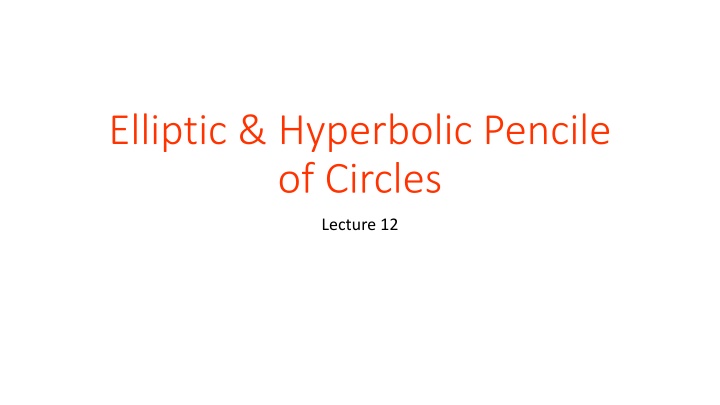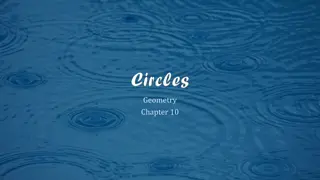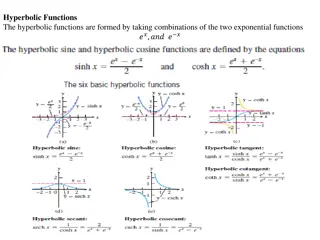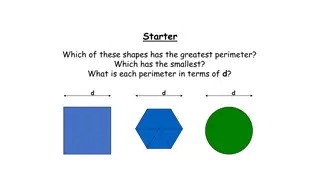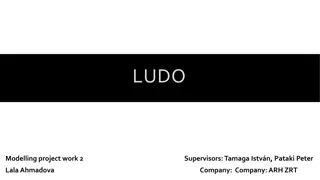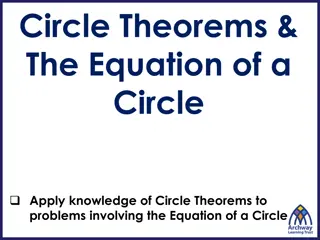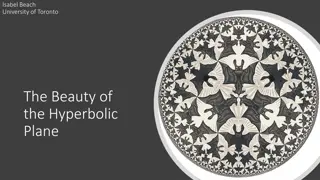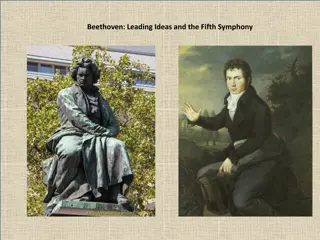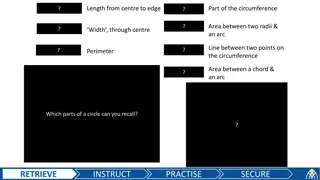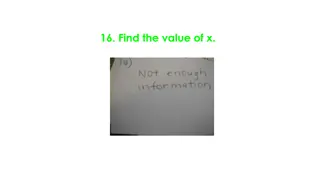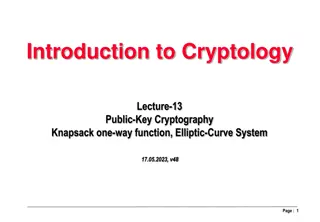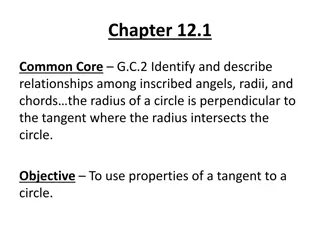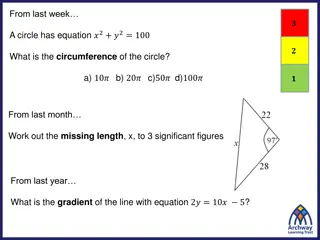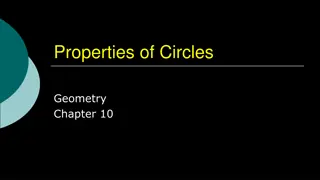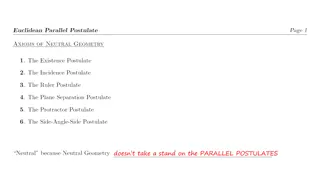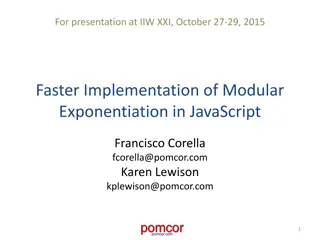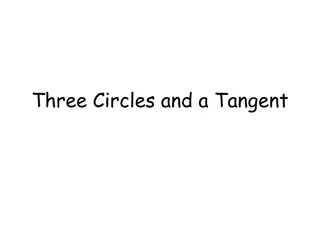Elliptic & Hyperbolic Pencile of Circles Lecture 12
The lecture discusses elliptic and hyperbolic pencil of circles, equal power of a point, radical axis, coaxial circles, and more concepts in geometry. It covers how to find radical axis for circles, properties of elliptic and hyperbolic pencil of circles, and the equations to define elliptic circles.
Download Presentation

Please find below an Image/Link to download the presentation.
The content on the website is provided AS IS for your information and personal use only. It may not be sold, licensed, or shared on other websites without obtaining consent from the author.If you encounter any issues during the download, it is possible that the publisher has removed the file from their server.
You are allowed to download the files provided on this website for personal or commercial use, subject to the condition that they are used lawfully. All files are the property of their respective owners.
The content on the website is provided AS IS for your information and personal use only. It may not be sold, licensed, or shared on other websites without obtaining consent from the author.
E N D
Presentation Transcript
Elliptic & Hyperbolic Pencile of Circles Lecture 12
Note that (1) To make equal power of a point for two disjoint circles K1 and K2, draw third circles which is meet with K1 and K2, next draw joint chord among K1, k2 and K3, extension the two joint chords until intersection , the point intersect is equal power of a point about three circles and next is equal power of a point of two circles K1 and K2. K1 K2 K3
Note that (2) If two disjoint circles have the same center, then it s radical axis is straight line in infinites K1 K2
Definition: Any two such circles have the same radical axis and they are called coaxial circles example: find radical axis for two circles K1 and K2 K1: x2+y2-3x+2y=0.75 K2: 3x2+3y2+2x-13y=1
Elliptic Pencile of Circles: the set of circles which is pass by two constant points a and b, and the radical axis for these pencile of circles is extension of them joint chord. Let take any point c on the radical axis and draw from c tangent for pencile circles and let h1,h2, are tangent points, therefore, produce that (ch1)2= (ch2)2= then ch1=ch2= a b c h2 h1
Elliptic Pencile of Circles: if draw a circle pass through points h1,h2, , and center of this circle is point c , and this circle is orthogonal on the Elliptic pencile of circles. a b c h2 h1
Note two circles are orthogonal if first radius circle is orthogonal on the second radius circle. (m1m2)2=(cm1)2+(cm2)2 c m2 m1 k1 k2
Hyperbolic pencile of circles the set of circles, them center on the extension radical axis for the Elliptic circles
Circles Equation: if points coordinate a and b is (0,- b) and (0,b) and center of any Elliptic pencile circles is k(d,0) (x-d)2+(y-0)2=p2 where p is radius p2=(d-0)2+(0-b)2=d2+b2 then (x-d)2+y2=d2+b2 it is equation of Elliptic circle b(0,b) h(x,y) c(0,q) p K(d,0) p a(0,-b)
Circles Equation: center of Hyperbolic circle is c(0,q) then x2+(y-q)2=p12 where p1 is radius power of a point (ch)2=p12 and (ch)2=ca . cb p12=(q-b)(q+b)2=q2-b2 then x2+(y-q)2=q2-b2 it is equation of Hyperbolic circle b(0,b) (0.q1) h(x,y) c(0,q) p K(d,0) p a(0,-b)
Note1: Hyperbolic circles Hyperbolic circles does not intersection with each other. In other words there is no two intersection circles. Note2: Elliptic circles orthogonal orthogonal with Hyperbolic circles. Note3: Elliptic circles Elliptic circles intersection with each other. H.W H.W
